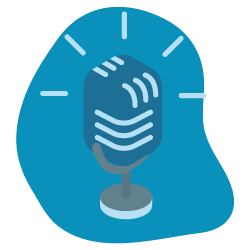We have updated our page groups segmentation feature with new functionalities! Pages categorization lets you segment your pages regarding recurrent patterns, business goals or characteristics. This way, you can easily check SEO improvements regarding your different groups of pages and have a better view of your performance and website’s structure.
What is new?
We have added new functionalities you can use to segment your pages:
- You can create different group sets: previously, you were limited to only one set with different page groups (up to 25 groups). Now you can create up to 10 sets with 15 page groups inside. For instance, an e-commerce website could have a group set called “electrical goods” with page groups for each categories : fridge, washing-machine, etc.
- You can create groups with rules based on page fields. However, these fields won’t be available on the logs monitoring, with your orphan pages dashboard (as we don’t have crawled these pages, we only know their URLs) and on some crawl report dashboards (inlinks, outlinks, structured data) ;
- Our Custom Filters are back: in your different reports, you can filter your dashboards with one of your page groups. If you need to focus on one page group to analyze your SEO performance, this functionality is pretty useful.
What have been improved/modified?
The page groups creation have been thought to make your experience smoother. You can:
- Create groups directly with a JSON configuration ;
- Export your JSON configuration to edit it more easily and then import it in Oncrawl again ;
- Choose your groups color ;
- Create your groups more easily: you now just have to create a group, define your rules and then save them ;
- Number of groups have been reduced to 15. Users who had previously up to 25 page groups will be able to keep them but will have to reduce them to 15 if they want to modify the groups.
How to create your page groups?
When you are on your report, click on the upper right button “More”.
 Then, select “Configure page groups”.
Then, select “Configure page groups”.
 Here, a default categorization has been set. You can create up to 10 group sets containing themselves up to 15 page groups.
Here, a default categorization has been set. You can create up to 10 group sets containing themselves up to 15 page groups.
You can edit the page groups of your default group set by clicking on “Edit group”, add new page groups or you can either create a new group set by clicking on “Create Group Set”.
 Once, you’ve clicked on “CREATE GROUP SET”, you can either choose to create a group set from an empty one, by using an URL path, an existing set or using a JSON configuration.
Once, you’ve clicked on “CREATE GROUP SET”, you can either choose to create a group set from an empty one, by using an URL path, an existing set or using a JSON configuration.

Check the box “I want to use this set on logs monitoring and cross analysis dashboards” if you would like to access your new group set on every report. Don’t forget to name your group and then hit “CREATE GROUP SET”.
Now, you can add page groups to your newly created group set. Simply click on “CREATE PAGE GROUP”. When you create a new group set, all your URLs are located in a page group called “other”. You need to segment your URLs.
 To create a new page group, you can use different rules :
To create a new page group, you can use different rules :

 Then, click on “Refresh matched URLs” to see the result of your query and hit “Save changes”.
Then, click on “Refresh matched URLs” to see the result of your query and hit “Save changes”.
If you want to add another page group, just restart the process.

Once, you’ve done creating your page groups and group sets, simply click on “Show report” to access your dashboard with your new groups.
You can now filter your dashboards with the newly created groups sets.

Also, you can decide to use Custom Filters and focus on certain page groups belonging to your group set.

We hope this update will ease your daily SEO routine.

